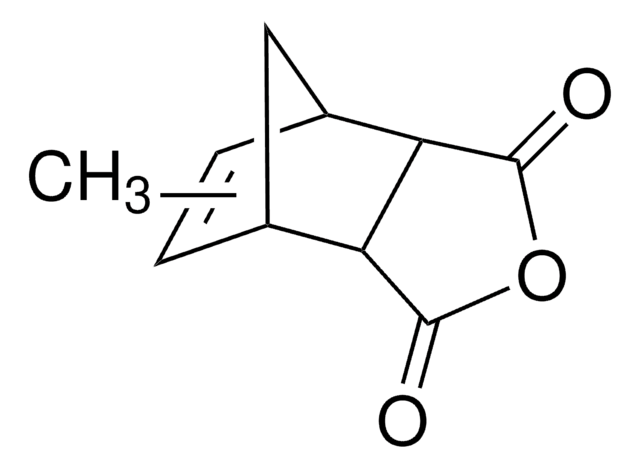45348
Epoxy embedding medium, accelerator
≥95% (NT)
Synonyme(s) :
2,4,6-Tris(dimethylaminomethyl)phenol, Epon™ DMP 30 substitute, DMP-30
About This Item
Produits recommandés
Densité de vapeur
>1 (vs air)
Pression de vapeur
<0.01 mmHg ( 21 °C)
Pureté
≥95% (NT)
Forme
solid
Couleur
colorless to light yellow
Indice de réfraction
n20/D 1.516 (lit.)
n20/D 1.517
Point d'ébullition
130-135 °C/1 mmHg (lit.)
Densité
0.969 g/mL at 25 °C (lit.)
Application(s)
hematology
histology
Température de stockage
2-8°C
Chaîne SMILES
CN(C)Cc1cc(CN(C)C)c(O)c(CN(C)C)c1
InChI
1S/C15H27N3O/c1-16(2)9-12-7-13(10-17(3)4)15(19)14(8-12)11-18(5)6/h7-8,19H,9-11H2,1-6H3
Clé InChI
AHDSRXYHVZECER-UHFFFAOYSA-N
Vous recherchez des produits similaires ? Visite Guide de comparaison des produits
Application
Informations légales
Produit(s) apparenté(s)
Mention d'avertissement
Danger
Mentions de danger
Classification des risques
Acute Tox. 4 Oral - Eye Dam. 1 - Skin Corr. 1B
Code de la classe de stockage
8A - Combustible corrosive hazardous materials
Classe de danger pour l'eau (WGK)
WGK 1
Point d'éclair (°F)
300.2 °F - closed cup
Point d'éclair (°C)
149 °C - closed cup
Équipement de protection individuelle
Faceshields, Gloves, Goggles, type ABEK (EN14387) respirator filter
Certificats d'analyse (COA)
Recherchez un Certificats d'analyse (COA) en saisissant le numéro de lot du produit. Les numéros de lot figurent sur l'étiquette du produit après les mots "Lot" ou "Batch".
Déjà en possession de ce produit ?
Retrouvez la documentation relative aux produits que vous avez récemment achetés dans la Bibliothèque de documents.
Les clients ont également consulté
Notre équipe de scientifiques dispose d'une expérience dans tous les secteurs de la recherche, notamment en sciences de la vie, science des matériaux, synthèse chimique, chromatographie, analyse et dans de nombreux autres domaines..
Contacter notre Service technique














